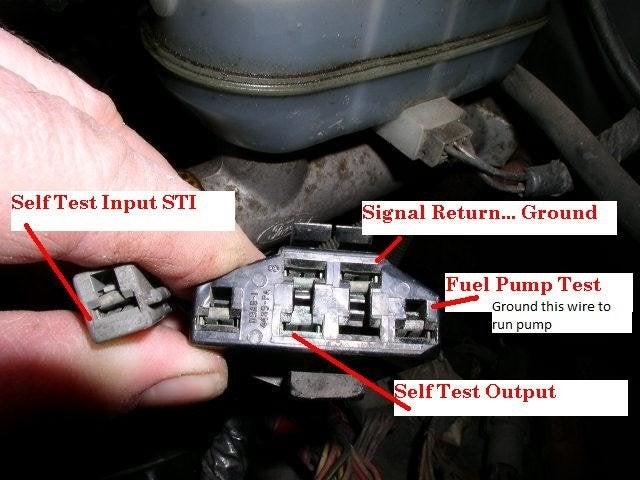Many owners of the 1994 Mazda B3000 often search for OBD2 diagnostic information, but it’s important to understand that this model is equipped with an OBD1 system. Unlike modern vehicles with standardized OBD2 ports, accessing diagnostic trouble codes on your 1994 Mazda B3000 requires a slightly different approach. This guide will walk you through the process of reading these codes using the Check Engine Light (CEL), without the need for a scan tool.
First, locate the OBD1 connector in your engine bay. It’s typically a rectangular connector and might have a protective cap labeled “EEC” on top. This connector is often found clipped to the engine fuse box.
 OBD1 Connector 1994 Mazda B3000 Engine Bay
OBD1 Connector 1994 Mazda B3000 Engine Bay
You’ll notice a single grey connector on the same harness, separate from the main OBD1 port. To initiate the diagnostic process, you will need a simple jumper wire or an unfolded paper clip.
Before proceeding, ensure the ignition key is turned off. Refer to the diagram below to identify the necessary slots within the OBD1 connector.
 OBD1 Connector Pinout Diagram for 1994 Mazda B3000
OBD1 Connector Pinout Diagram for 1994 Mazda B3000
You need to create a connection between the single grey connector, known as the “Self Test Input,” and the “Signal Return” slot on the larger OBD1 connector. This jumper will activate the EEC test mode when you turn the key to the ‘on’ position (engine off).
Now, turn the ignition key to the ‘on’ position, but do not start the engine. Observe the Check Engine Light (CEL) on your dashboard. For a 1994 Mazda B3000, the system will display 3-digit trouble codes. A comprehensive list of these codes is available for reference.
The CEL will initially flash once to indicate the computer has powered up. Following this, it will begin to flash the diagnostic codes. For example, if you see one flash, a short pause, then one flash, another short pause, and finally six flashes, followed by a long pause, this sequence represents code 116. It might seem complex initially, but with a little practice, reading these flashes becomes quite straightforward.
The system will cycle through all stored trouble codes and then repeat them. Once you observe a code sequence repeating, you have successfully retrieved all the diagnostic codes currently in the vehicle’s memory. Code 111 indicates that no fault codes are stored in the system’s memory.
To clear the stored codes, you can remove the jumper wire while the key is still in the ‘on’ position. If you simply turn off the key and remove the jumper, the codes will remain saved in the memory.
Clearing the codes is generally recommended after reading them. This allows you to drive the vehicle and see if any codes reappear. If a problem persists, the computer will likely reset the corresponding code. If no new codes are set after driving, it suggests the issue may have been resolved or was transient.
For instance, experiencing “bad gas” might trigger codes due to rough engine running. However, once the bad fuel is no longer in the system, these codes might become irrelevant. Clearing the codes in such cases prevents unnecessary troubleshooting of issues that are no longer present. By clearing the codes and observing if any return, you can effectively diagnose current problems with your 1994 Mazda B3000.